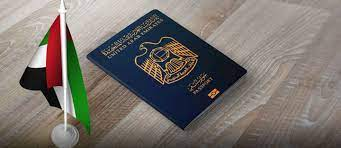Post Preview
Carrying a concealed firearm is a personal responsibility that requires careful selection of equipment and clothing. Investing time in comfortable carry setups ensures safety and effectiveness, making it a second nature while meeting safety requirements.
One technique to improve concealment and comfort is to select specialized products that suit your needs. For instance, concealed carry ankle holsters allow for discreet carry, especially when a waist or shoulder holster is impractical. Holsters are crucial for sitting environments or dress codes, affecting accessibility and comfort. Regular reevaluation ensures gear meets individual needs, and adjustments are made as body, wardrobe, or lifestyle changes occur.
Selecting the Right Firearm
The best concealed carry setup involves selecting the right firearm based on size, weight, grip, and capacity. Compact pistols are easier to hide, but may impact shooting accuracy. Larger pistols are comfortable but may print or feel cumbersome. A balance between concealability and shootability is essential, and the firearm should be comfortable for extended use.
Choosing an Appropriate Holster
Holster selection is crucial for comfort and safety. There are various types, including inside-the-waistband (IWB), outside-the-waistband (OWB), shoulder, and ankle holsters. Some popular styles include shoulder for extended sitting, ankle for discreet access, and appendix carry for concealability. Ensure the holster covers the trigger guard and allows a secure draw. Experiment with ride height, cant, and material type.
Investing in a Quality Belt
A high-quality gun belt distributes firearm and holster weight evenly around the waist, improving comfort and reducing “printing.” Specialized carry belts for concealed carriers offer reinforced interiors and high-quality buckles. Investing in a sturdy belt ensures secure, discreet carry setups and preserves firearm and holster lifespan.
Dressing for Concealment
Your wardrobe is crucial for successful concealed carry. Choose baggy shirts, darker colors, and patterns to mask your firearm’s presence, especially in public settings. Subtle clothing, like untucked shirts or outer layers, prevents accidental printing. In warmer weather, lightweight fabrics and breathable undershirts improve comfort. Develop versatile outfits that blend into your environment, ensuring comfort and discretion throughout the year.
Practicing Regularly
Regular practice with your firearm and holster is crucial for building muscle memory and confidence, enabling swift reactions in dangerous situations. Regular practice helps identify gear issues and can be supplemented by defensive shooting classes or range practice. For additional advice on best practices, authoritative sources like the NRA-ILA Gun Laws Resource can be useful. Commitment to ongoing practice also fosters a responsible mindset and helps reinforce safety habits.
Maintaining Situational Awareness
Carrying responsibly requires being aware of your surroundings and people. Recognizing potential threats and handling small adjustments privately can help avoid dangerous situations. Knowing exits and crowd flow can help react quickly. Practicing “condition yellow” can enhance safety without negatively impacting daily routines.
Understanding Legal Responsibilities
Concealed carry requires understanding local, state, and federal regulations. Even minor infractions can have serious consequences. Proactively maintain knowledge of legal permits, justifications, and protocols. Staying updated on legal guides helps maintain law compliance and promotes responsible gun ownership. Making thoughtful choices about firearms, holsters, wardrobe, and training builds confidence and comfort. Prioritize safety in practice and daily life, ensuring preparedness for any scenario.


